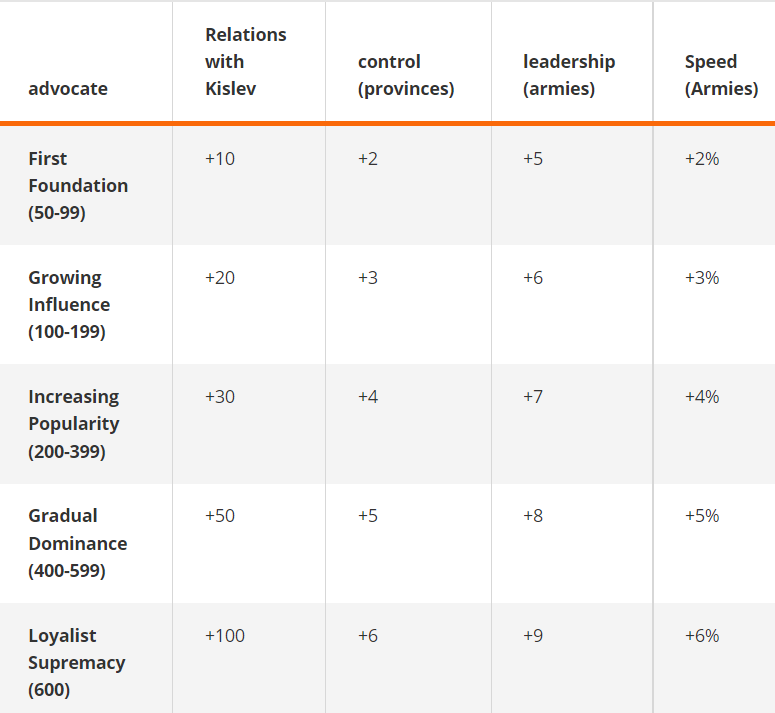Located in the north of the Old World, the courageous Kislev people have been in constant conflict with the Chaos Realms since their inception. The Tzar Empire has extensive peculiarities and special mechanics, which we want to explain to you in this guide.
 |
| Mighty polar bears and heavily armored shock cavalry are the hallmarks of Kislev. |
The Tzar Empire of Kislev
The Tzar kingdom of Kislev separates the empire from the Norsca and the enemy Chaos hordes, which is why they are at the mercy of constant threats. At the head of the provincial capital, Kislev is the ice queen Tzarina Katarina, who is said to draw her power from the motherland itself and can cast powerful ice spells.
In diplomatic and religious opposition is Kostaltyn, who has the provincial capital of the land of the trolls in Alexandronov Castle. The third spearhead is Tzar Boris Bokha, initially trapped in the ice, whose daughter Tzarina is Katarina himself. Although religious conflicts shake the bond Kislev has in the marrow, the three commanders have one thing in common: the perpetual war against chaos.
Legendary Commanders:
- Tzarina Katarina
- Kostaltyn
- Boris Ursus
Special Units
- Heavily armored Cossars equipped with both melee and ranged armament. On the one hand, this allows you to weaken enemy troops just before the collision, but on the other hand, you have to actively switch between the armaments.
- Ice Guards can already attack their enemies at long ranges, dealing ice damage at both range and melee.
- Heavily armored shock cavalry with high attack bonuses that can absorb a lot of damage compared to another cavalry.
- Elemental Bears and War Bear Riders, endowed with high weapon strength, capable of breaking through enemy formations in the blink of an eye and bringing terror to the battlefield.
Appoint Atamans
As a Kislev faction, you have the option of hiring an ataman to rule a province. This is a governor who can have a positive influence on a province's income, control, growth, and corruption. However, you can only appoint one ataman for every two provinces you own.
Example: If you own four provinces, you can hire two atamans.
In addition to the traditional benefits, Ataman will also learn new skills over time that can be of benefit to you. For example, it is possible for an experienced Ataman to boost the research rate, increase the recruitment rank of heroes and commanders, or minimize attrition during sieges.
When choosing an Ataman, you should balance his bonuses with a province's current weaknesses or further increase positive effects.
Example: If an ataman boosts the income of a province by 10%, it pays to choose a province that already generates the highest income. Conversely, you should assign an ataman with a control bonus to a province that is at risk of rebellion.
As soon as you have appointed an ataman, this is also available as a commander and can be recruited. Note, however, that if he dies on the battlefield, not only will a commander be lost, but possibly a veteran ataman as well.
The Ice Court
If you look in the technology tree, you will find technologies like "Initiation of the Ice Court" and "Discipline of the Ice Court", which open up new possibilities in the Ice Court after researching them. This is the only way you can train ice maiden heroines and ice witch commanders for a sum of 1,200 coins.
The special thing about it: In the course of the five rounds of training, you can decide for yourself which skills and bonuses the heroine or commander should have. However, the variety of skill trees is limited to just two variants (Hurricane & Ice).
Once the training is complete, the commander or heroine does not simply appear on the campaign map. Instead, you must recruit them like any other unit through the recruitment window.
The Motherland
The Motherland game mechanic puts you in a political contest for dominance of the Kislev factions. The Court of Ice (Tzarina Katarina) is in direct conflict with the Great Orthodoxy (Kostaltyn). Whoever can win 600 supporters first wins the race and enters into a confederation with their adversary.
To get advocates faster, you can invoke four deities:
- Salyak: Generates 1 endorser from character rank-ups.
- Dazh: Generates 1 advocate by constructing a building.
- Ursun: Generates 5 supporters by occupying a settlement.
- Gate: Generates 2 advocates by fighting a battle.
The duration of an invocation is always fixed at ten rounds. So if you have a lot of construction projects going on, you should call Dazh. If you can level up several characters, it is advisable to invoke the deity Salyak. Remember that you should only invoke one deity at a time. If you activate two deities, the effect of the deity called first is lost again.
On your way to a supporter count of 600, you can reap advantages in several stages, provided you reach them before your adversary. These benefits are as follows:

If your adversary reaches a certain number of supporters before you, you can reduce this with 5,000 coins or 250 devotion.
Dedication as a Special Resource
Devotion serves the simple purpose of winning over "The Motherland" or reaping the bonuses resulting from advocates. Also, with devotion gained, you can reduce your adversary's supporters to the motherland and invoke gods for small bonuses and supporter generation.
The following means are available to you for gaining devotion:
- Deploy Ice Court Hero or Patriarch Hero.
- Fight armies of chaos.
- mission completions.
- Construct religious buildings from the infrastructure building chain.


Comments
Post a Comment